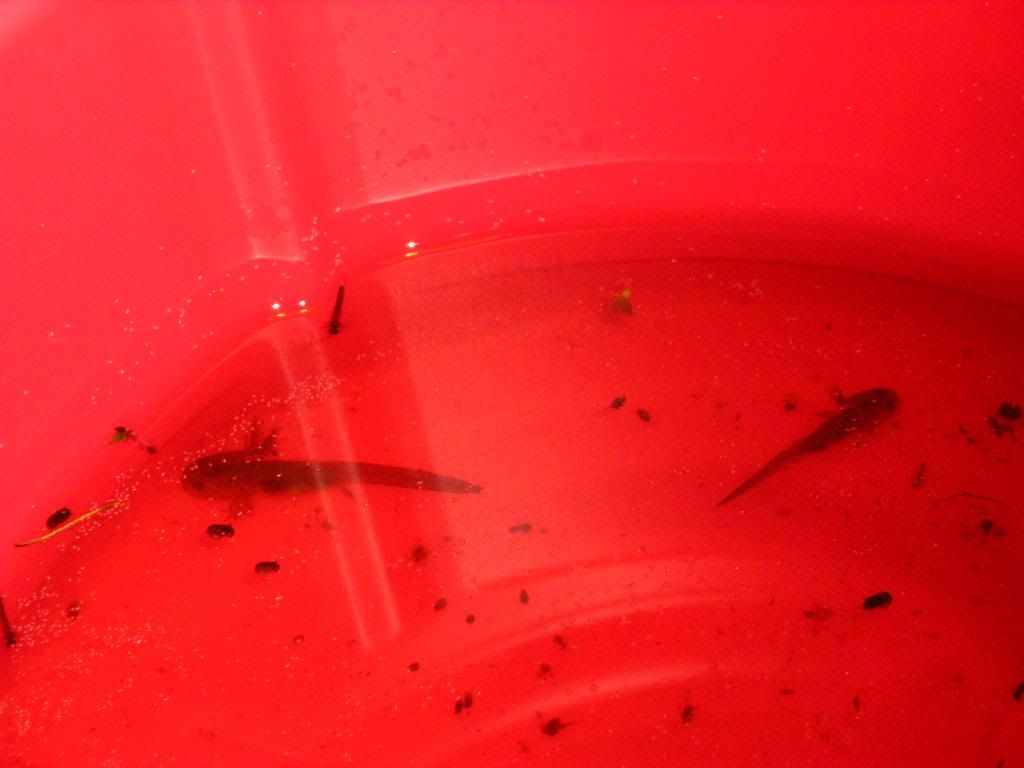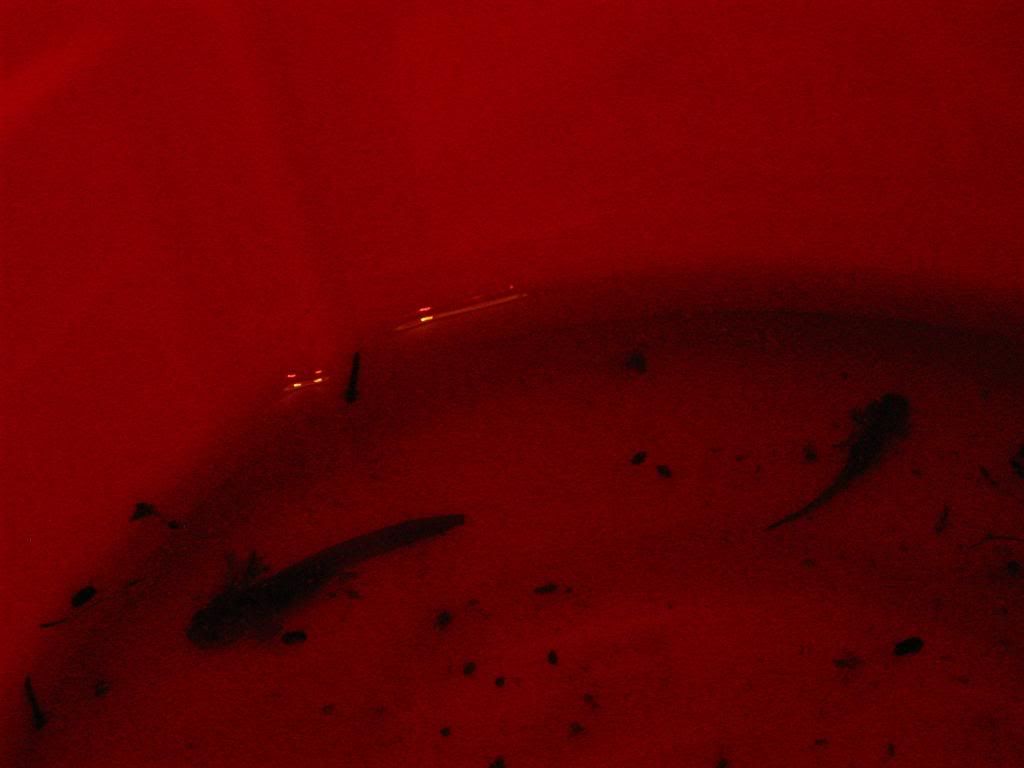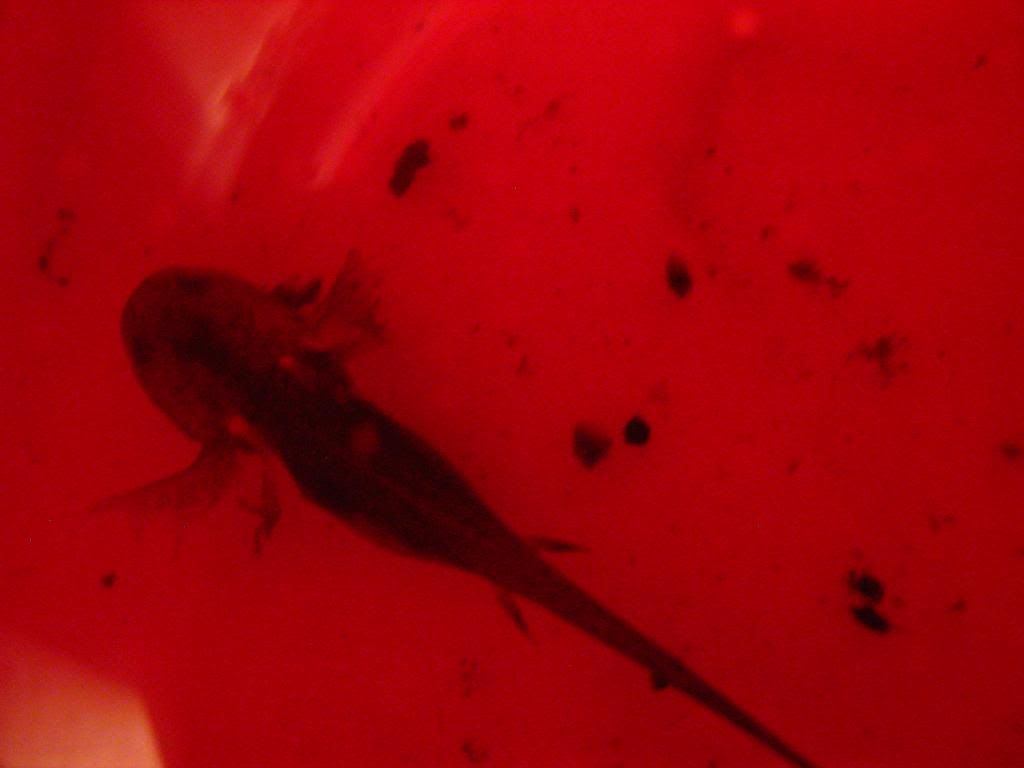I'm fairly new to this as well, Maryanngriff, so all the advice I can come up with is: keep the water clean with frequent partial water changes, monitor their feeding habits as well as possible, feed their food so they get maximum nutrition, and don't let them dry out once they begin to climb onto land. I'll let you know if anything else comes to mind!
My largest one is just beginning to develop hind legs, so I guess I should be starting to create a shore as well. Six has gone down to four, though. It appears I have a cannibal on my hands! S/he's eaten the two smallest, and the remaining are substantially larger than his/her previous victims. Would still it be a good idea to segregate the aggressor, just in case?
I'm just concerned about a future food supply though. The pond that I've been getting the insects from is actually more of a large puddle and will likely dry up in the next couple of weeks. Local pet stores only sell pellet food, and I'm not entirely sure that they will accept it. Do you know of any ways to train or trick them into consuming motionless food? Or is there any invertebrates that are comfortable in water and easily bred? I will only need them for the duration of the salamanders aquatic life.
Also, is there any way to tell at this age if they are, in fact, northwestern or long-toed salamanders? I've looked up photos of both and can't quite see significant differences. And one last thing, if anyone knows exactly what those tiny dots on the water are that'd be great. I've looked it up and found that they could be a harmless mite-like decomposer, however I'm not positive and would like to know if it's urgent that I get rid of them. Here are the best photos I managed, although they are not very great.




I apologize for the long post, and thank-you!




